Yes you can merge the information from the CSV files by reordering them based on the file/name information from the RDS files. Below I illustrate how to do this using the check.* columns from the CSV files. These are typically closest to what I need for doing an IRT analysis.
First, you read the CSV and RDS from the first version of the exam:
eval1 <- read.csv2("/path/to/first/nops_eval.csv", dec = ".")
metainfo1 <- readRDS("/path/to/first/exam.rds")
Then, you only extract the check.* columns and use the exercise file names as column names.
eval1 <- eval1[, paste0("check.", 1:length(metainfo1[[1]]))]
names(eval1) <- sapply(metainfo1[[1]], function(x) x$metainfo$file)
I'm using $file here because it is always unique across exercises. If $name is also unique in your case and has the better labels, you can also use that instead.
Then you do the same for the second version of the exam:
eval2 <- read.csv2("/path/to/second/nops_eval.csv", dec = ".")
metainfo2 <- readRDS("/path/to/second/exam.rds")
eval2 <- eval2[, paste0("check.", 1:length(metainfo2[[1]]))]
names(eval2) <- sapply(metainfo2[[1]], function(x) x$metainfo$file)
If the same exercises have been used in the construction of the two version, the column names of eval1 and eval2 are the same, just in a different order. Then you can simply do
eval2 <- eval2[, names(eval1)]
to reorder the columns of eval2 to match those of eval1. Subsequently, you can do:
eval <- rbind(eval1, eval2)
If you have more than two versions of the exam, you just iterate the same code and rbind() everything together in the end.
Similar code can also be used if the exercises are just partially overlapping between the versions of the exercise. In that case I first construct a large enough NA matrix with the merged exercise file names and then insert the results:
n1 <- nrow(eval1)
n2 <- nrow(eval2)
nam <- unique(c(names(eval1), names(eval2)))
eval <- matrix(NA, nrow = n1 + n2, ncol = length(nam))
colnames(eval) <- nam
eval[1:n1, names(eval1)] <- as.matrix(eval1)
eval[(n1 + 1):(n1 + n2), names(eval2)] <- as.matrix(eval2)
Again you would need to iterate suitably to merge more than two versions.
In either case the resulting eval could then be processed further to become the IRT matrix for subsquent analysis.
